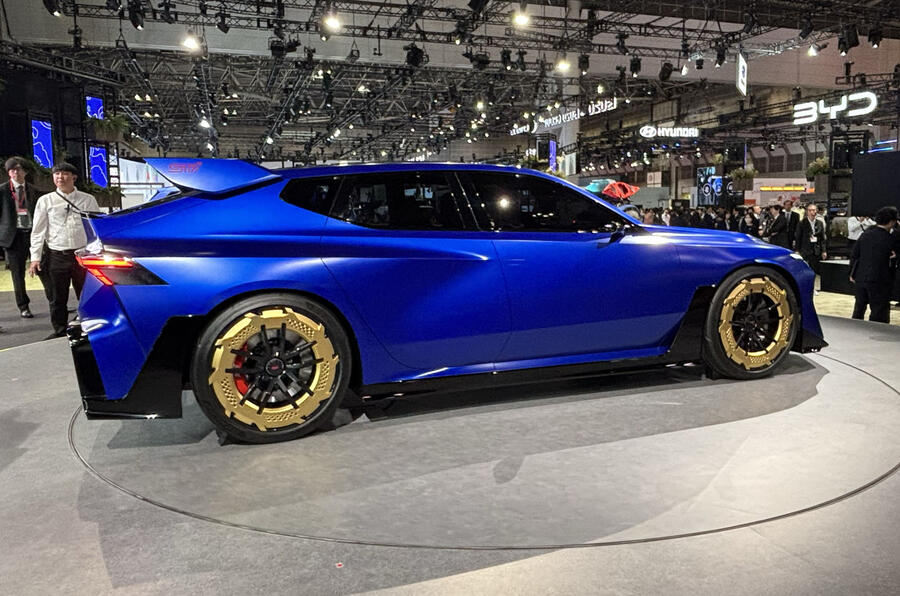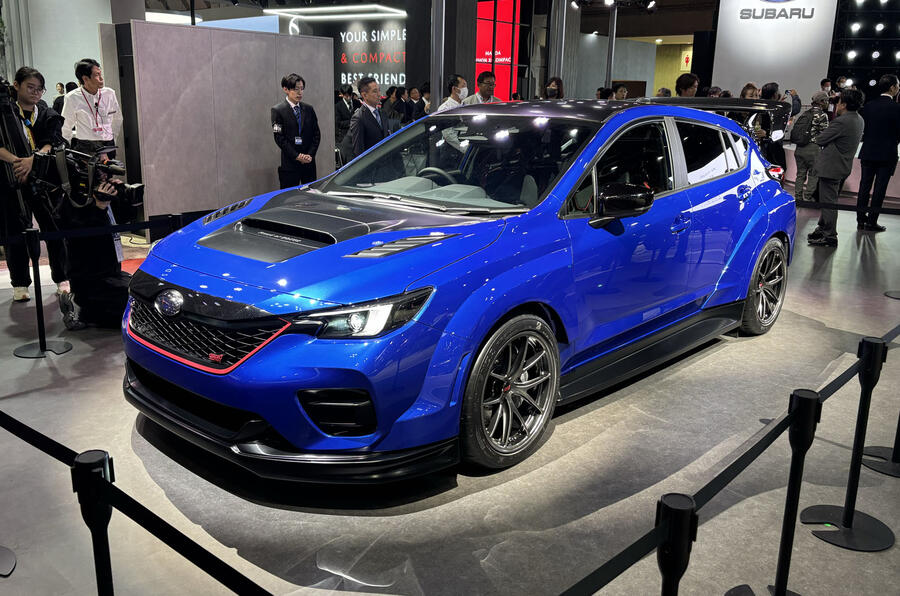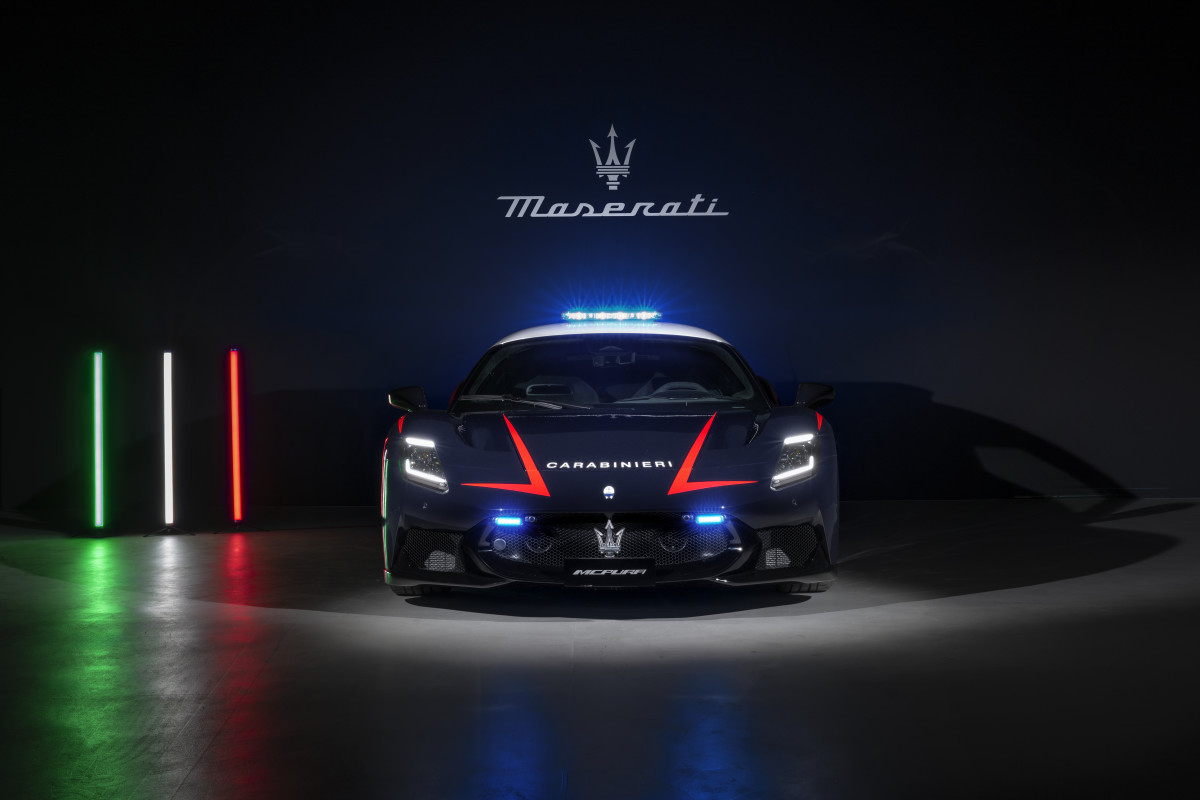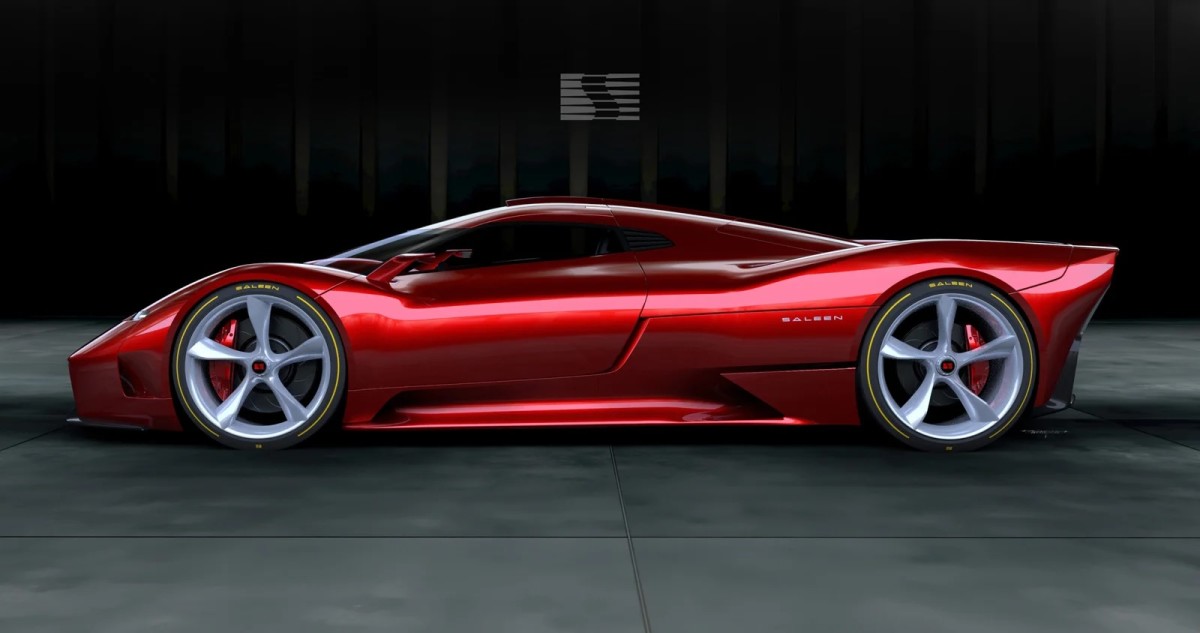Subaru’s New Performance EV Concept Is a Betrayal of Its Rally Heritage, Igniting a Culture War Among Enthusiasts and Purists in the Automotive World!
Subaru has long been synonymous with rally racing and performance, particularly through its iconic STI (Subaru Tecnica International) brand, which has captured the hearts of motorsport enthusiasts and everyday drivers alike. The recent unveiling of the Performance-E STI concept at the Tokyo Motor Show marks a pivotal moment for the brand, as it attempts to reconcile its storied past with an electrified future. This move, however, is not without controversy; it raises questions about authenticity, heritage, and the very essence of what makes Subaru special.
The Performance-E STI concept is described as a “wild new sports car” that aims to represent the future of Subaru’s performance scene. Although details are sparse, the company has indicated that the concept draws heavily from its rich heritage while also providing a “driver-friendly layout and a comfortable, spacious interior.” This is a departure from the raw, visceral experiences associated with traditional Subaru performance vehicles, such as the Impreza WRX STI, which has been a mainstay in rally racing since the 1990s.
At its core, the Performance-E STI is designed to feature two driven axles, consistent with the STI brand’s historical affinity for all-wheel drive and rally-honed performance. This technological evolution is a nod to the brand’s legacy, but it also highlights the challenges faced by automakers in a world increasingly shifting toward electrification. As David Dello Stritto, Subaru’s European boss, pointed out, the automotive landscape is changing, and Subaru must adapt to remain relevant.
Stritto’s remarks underscore a broader trend within the industry: the necessity for traditional performance brands to rethink their strategies in an era dominated by environmental regulations and consumer preferences for sustainable technologies. He lamented the absence of a “fourth pillar” in Subaru’s offerings—power and performance—since the discontinuation of the WRX STI in Europe nearly a decade ago. This absence has created a vacuum that many Subaru enthusiasts feel deeply, as the brand’s identity is inextricably linked to its performance lineage.
The implications of this shift are significant. While electric vehicles (EVs) offer new opportunities for power and performance—thanks to instant torque and advanced all-wheel-drive systems—there is a palpable concern among purists that the soul of Subaru is being compromised. The Performance-E STI, with its sleek lines and modern design, may attract a new generation of drivers, but it raises the question: Can it truly capture the essence of what made Subaru’s performance models legendary?
The unveiling of the Performance-E STI coincides with the 30th anniversary of Colin McRae’s historic World Rally Championship victory in the Subaru Impreza 555. This milestone is not just a coincidence; it serves as a reminder of Subaru’s storied past in motorsport, a legacy built on rally victories and a passionate fanbase. The dark blue paint, gold wheels, and pink STI detailing of the new concept pay homage to this heritage, yet they also highlight a dichotomy between nostalgia and innovation.
While the Performance-E STI is not based on any current production model, its design as a rakish four-door fastback hints at the possibility of a successor to the Subaru Legacy, which has been in the market for six years without a significant update. The concept follows the STI E-RA, another ambitious electric performance vehicle revealed in 2022, which aimed to showcase Subaru’s commitment to maintaining a performance car offering in the EV era. The E-RA was a dedicated supercar, boasting a quartet of Yamaha EV motors that generated over 1,000 horsepower, illustrating the potential of electric performance.
Yet, the shift to electrification is not without its challenges. Stritto noted that current regulations, such as gasoline particulate filters, pose significant hurdles for performance-oriented vehicles. These restrictions limit the capabilities of traditional internal combustion engines, making electric powertrains an appealing alternative for those seeking performance without compromising environmental standards. This sentiment is echoed across the automotive industry, as manufacturers scramble to align their offerings with evolving consumer expectations and regulatory requirements.
Subaru’s decision to embrace electrification reflects a broader trend among automakers to pivot towards sustainable technologies while still appealing to performance enthusiasts. The Performance-E STI concept aims to strike a balance between these competing interests, but the question remains: will it be enough to satisfy the brand’s loyal following? The challenge lies in convincing purists that electric performance can deliver the same visceral thrill and driving experience that has defined Subaru’s reputation for decades.
Meanwhile, on Subaru’s Tokyo stand, an STI concept version of the current production Impreza was also showcased. This model is more likely to enter production as a replacement for the US and Japan-market WRX, which has essentially become a standalone model separate from the Impreza line. While details about this concept are limited, it reportedly features a boxer engine and all-wheel drive, designed to offer more customers the chance to experience the joy of driving—a core principle that has long been associated with the Subaru brand.
The juxtaposition of these two concepts—the Performance-E STI and the STI concept Impreza—highlights the tension between Subaru’s performance heritage and its future direction. As the automotive landscape evolves, Subaru faces the daunting task of redefining what performance means in an era dominated by electrification and environmental consciousness. The stakes are high, as the company must navigate the expectations of its loyal fanbase while also appealing to a new generation of drivers who may prioritize sustainability over tradition.
The introduction of the Performance-E STI is a bold move, yet it raises fundamental questions about the brand’s identity and the future of performance vehicles as a whole. As the automotive industry continues to grapple with the implications of electrification, Subaru’s efforts to maintain its performance ethos in this new paradigm will be closely scrutinized by enthusiasts and critics alike. The challenge lies not only in delivering cutting-edge technology but also in preserving the spirit that has made Subaru a beloved name in the world of motorsport and performance driving.

Rally-influenced four-door takes the spirit of the Impreza WRX into a new era
Subaru has given a glimpse at the future of its STI performance brand with a wild new sports car concept at the Tokyo motor show.
The Performance-E STI concept “represents the future of the performance scene, spearheading Subaru’s new generation”, the company said.
It has given very few details of the concept, but says it has been designed with influence from the brand’s heritage, and offers a “driver-friendly layout and a comfortable, spacious interior”.
It is also understood to feature two driven axles, in line with the STI brand’s affinity for four-wheel drive, rally-honed performance.
The concept comes shortly after Subaru’s European boss David Dello Stritto told Autocar that “there were plans to bring back the sportiness in Subaru”.
He said the brand had a reputation for selling cars that were “safe, fun and tough” (SFT), but said there were opportunities to consider relaunching a performance model, with the previous Impreza WRX STI bowing out of Europe nearly a decade ago.
“There’s a fourth pillar I’ve been missing to sell in Europe for the last 10 years and that’s P, for power and performance,” he said. “Ask the average person what Subaru means and they’ll say STI. You can’t disassociate this from Subaru.
“So we need to bring sportiness back to Subaru. Right now, we couldn’t do it: Europe says you can’t, because you have a GPF [gasoline particulate filter] that can literally choke your engine.”

Primarily for that reason, he said electric vehicles present an interesting opportunity to reinvent the STI brand – because “you’ve got the power and performance, and you’ve got an all-wheel drive system” – the latter being an intrinsic element of Toyota’s performance heritage.
“We’re working on more sporty models, and electrification allows us to do this”, he said – and the Performance E-STI appears to be the manifestation of that ambition.
Notably, it has been revealed just a few weeks ahead of the 30th anniversary of Colin McRae’s legendary WRC victory at the wheel of the Subaru Impreza 555, and clearly takes some influence from the iconic Group A dominator in its dark blue paint, gold wheels and pink STI detailing.
It does not appear to be based on any current production model, but as a rakish, four door fastback, it could preview a successor to the current Subaru Legacy, which has been on sale (not in the UK) for six years.
The Performance E-STI follows on from the wild STI E-RA concept Subaru revealed in 2022 as an early indication of its plans to maintain a performance car offering in the EV era.
That concept, though, was a dedicated supercar – completely unrelated to any production model – with a quartet of Yamaha EV motors that produced 1073bhp, and a carbonfibre monocoque helping to keep weight to 1690kg.
Also on Subaru’s Tokyo stand was an STI concept version of the current production Impreza (pictured below), which is more likely to enter production in the near future as a replacement for the US- and Japan-market WRX, which is effectively a standalone model separate from the Impreza line.

Details were similarly sparing, but it was said to have a boxer engine and AWD, and had been designed to “offer more customers the chance to experience the joy of driving”.
There was no word on any plans for a production version, nor any indication that it could be a global model.



